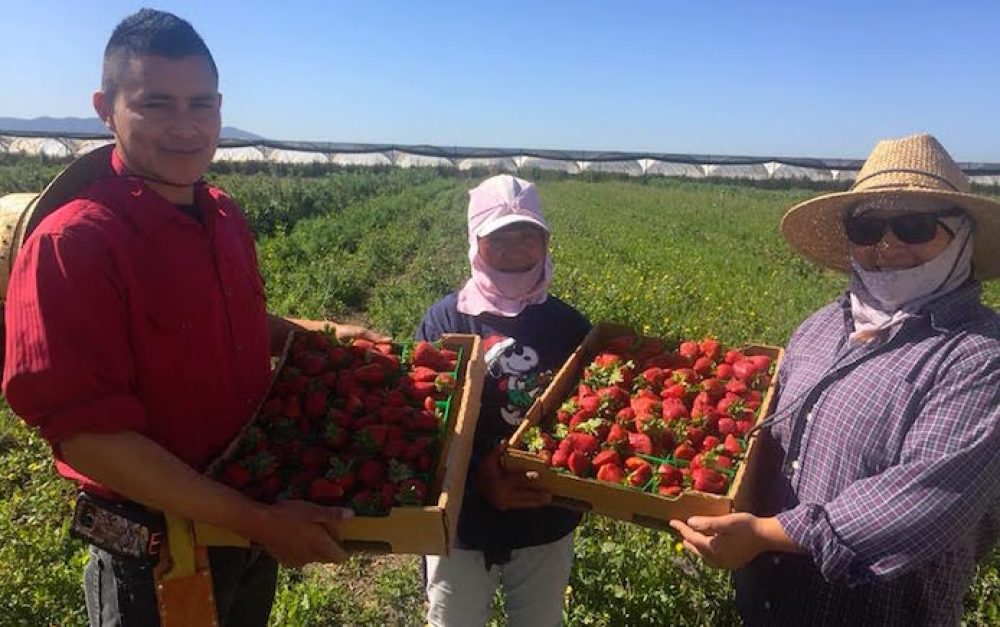I am very fortunate to call California, Ventura County specifically, home. The Golden State hosts more than 25 million acres of farmland, and many Californians live in communities nestled alongside these vast expanses of agriculture. Ventura County’s unique Mediterranean microclimate allows for high production levels of several different types of row crops, most notably strawberries.
Adam Vega is a community organizer with Californians for Pesticide Reform. In this blog, he shares his experience living in the agricultural community of Ventura County, California, where pesticide use is high, children and farmworkers are at risk, and community members are stepping up to take action together.
I am very fortunate to call California — Ventura County specifically — home. The Golden State hosts more than 25 million acres of farmland, and many Californians live in communities nestled alongside these vast expanses of agriculture. Ventura County’s unique Mediterranean microclimate allows for high production levels of several different types of row crops, most notably strawberries. But similar to the rest of the country, Ventura County farmers find themselves highly dependent on producing a single crop at a very large scale.
Much of the food grown is not for the surrounding communities but instead is exported thousands of miles away. This type of agricultural system forces farmers to maximize production and revenues in order to stay in business. This industrialized system, at such large scale, leads to extremely high levels of pesticide application — toxic chemicals are used to keep pests and weeds at bay while synthetic fertilizers introduce nitrogen into the soil to increase yields. This is common practice for most of the farming taking place in our county.
Chlorpyrifos in Ventura County
Ventura County ranks no. 1 in the state for pounds of pesticide applied per square mile — 858,200 pounds to be exact, with 26,000 pounds of that being chlorpyrifos. This pesticide is a potent neurotoxin linked to autism, ADHD, IQ loss and neurological, respiratory and developmental health harms. Chlorpyrifos is applied in huge quantities in my community, especially on citrus and strawberries. Yet the heaviest users of toxic pesticides do not pay to monitor, regulate or clean up the pollution.
Chlorpyrifos was banned from home use in 2000, but in November of that year, children from two schools in Ventura County were exposed to chlorpyrifos: 575 students in grades K-5 from Mound Elementary, and more than 1,200 students in grades 6-8 from Balboa Middle School. Spraying was taking place at a nearby lemon orchard and the pesticide drifted onto the two schools, harming countless students, faculty and staff.
Eighteen years later, we’re still facing pushback to banning this pesticide on the local, state, and federal levels. The real cost is paid by those who harvest our food, and the students and communities near fields where these harmful chemicals are applied. Rural farming communities like ours, which have historically had disproportionately low levels of economic and political power, are exploited by this farming system.
A community-driven response
The desire to protect our community and move towards a chemical-free agricultural system is what energized dozens of us from across the county to organize and form the Ventura County Coalition Advocating for Pesticide Safety (VC-CAPS).
We are a group of local residents, organic farmers, plant protection professionals, authors and artists organizing to reduce the threat of pesticide health harms and transition toward a regenerative and resilient food system. We meet monthly to strategize just how we can spread the message far and wide by amplifying our voice. In the last year, we have held news conferences, public gatherings, and meetings with our local and state representatives about transitioning away from toxic chemicals in our fields to more biologically based methods of pest and pathogen management.
Currently, we are focusing on securing a meeting with our newly appointed agricultural commissioner — the last one fled to Monterey to avoid meeting with us. Over the last year, our main campaign has been to have the county put a stop to the extremely high amounts of chlorpyrifos being used in our fields.
Looking toward the future
It’s important for policymakers to have a better understanding of the social, economic and environmental perspectives of those living and working in areas of heavy pesticide use like Ventura County. The involvement of our local community is not only imperative to understanding the problems and challenges, but also to developing sustainable solutions to these issues.
By educating agencies on these problems, the hope is that our local knowledge can be utilized to solve current and future problems. The information we’re sharing for policy reform will move upwards from the local, to the regional, and then to the state level. Our goal is to promote a quality of life sustained through a circular economy achieved by the contained utilization of the natural resources and complimentary natural systems of the environment already available to us.
The saying goes, “you are what you eat” but where we live, it’s “you are what your plants eat.”







